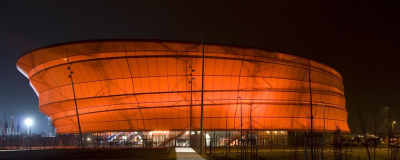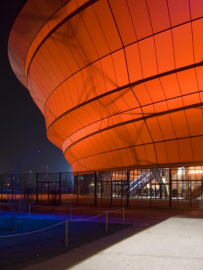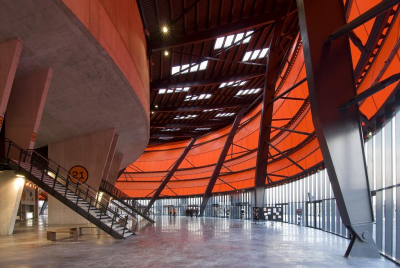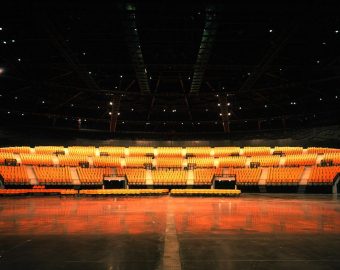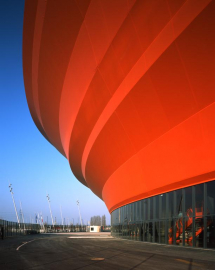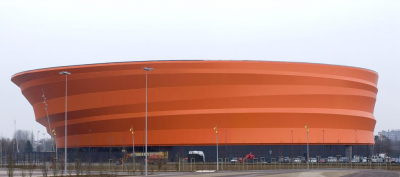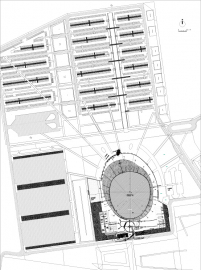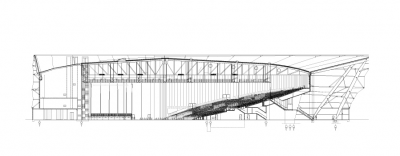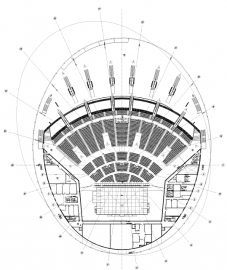Zenith Music Hall
Constructed along a major highway, the Zenith Music Hall is a key project in the redevelopment plan that is revitalising the urban periphery and territory surrounding Strasbourg. Like the other Zenith theatres, which have been built in France since the 1980s, the building provides high-quality flexible spaces for events, and although it can accommodate up to 10,000 spectators at a time, the space may be adapted to many different types and scales of venues ranging from major sports events to conventions; from opera performances to rock concerts. The design concept is based on a modular and well balanced organisation of several key elements: good visibility and excellent acoustics for the spectators and maximum cost management. Composed of three major materials concrete, steel and fabric the building is a single, unified and autonomous volume that conveys a strong presence in the landscape. Its dynamic character is due to the layering and rotation of the ellipsoid metal façade structure, which is covered with a translucent textile membrane that generates magnificent light effects. During the day, it appears as an orange-coloured opaque volume, while at night it is transformed into a huge light sculpture that glows from within, revealing the metal framework that supports the fibreglass skin. At the same time, this lightness is enhanced by projections on the outer skin, which convert the façade into a huge billboard that communicates with passers-by.
At the base, the glazed entrance hall provides fluid circulation with access directly into the auditorium, as well as to the staircases that lead to the upper tiers. The oval-shaped concrete auditorium supported by reinforced pilotis is the heart of the building, an enclosed protected space whence the experiences inside are transmitted to the outside through the translucent skin.

